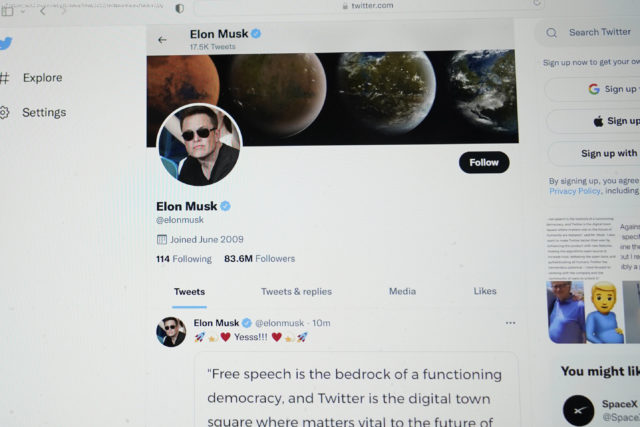The story of Twitter’s blue checkmarks—a simple verification system that’s come to be viewed as an elite status symbol—began with some high-profile impersonations, just as the site began taking off in 2008 and ’09.
The story of Twitter’s blue checkmarks—a simple verification system that’s come to be viewed as an elite status symbol—began with some high-profile impersonations, just as the site began taking off in 2008 and ’09.
Celebrities who saw their likeness spoofed included Kanye West, now Ye, the basketball star Shaquille O’Neil and the actor Ewan McGregor, who was also impersonated on a wildly popular website called … MySpace.
Then, in June 2009, St. Louis Cardinals manager Tony La Russa sued Twitter, claiming that a fake account, using his name to make light of drunken driving and two Cardinals pitchers who died, damaged his reputation and caused emotional distress.
LaRussa eventually dropped his lawsuit. But in June of that year, Twitter’s then-CEO Biz Stone introduced a verification system to sort out authentic accounts from impostors. The benefit would be to the holders of the accounts, but also to everyone else on Twitter. They could be sure, if they saw the blue check next to a name, that what they were reading was authentic.
Fast-forward to 2022. Twitter’s new owner and ruler, billionaire Elon Musk, wants to turn this verification system into a revenue source for the company he paid $44 billion to purchase. It’s a 180-degree turn from the stance he took earlier this year, before his buyout closed, when he said he wanted to “verify all humans” on Twitter.
After floating the idea of charging users $20 a month for the “blue check” and some extra features, he appeared to quickly scale it back in a Twitter exchange with author Stephen King, who posted “If that gets instituted, I’m gone like Enron.”
“We need to pay the bills somehow! Twitter cannot rely entirely on advertisers. How about $8?” Musk replied.
Whatever the price, the idea of a paid verification system is raising some complex questions and concerns—beyond the customary cheers and jeers that have accompanied Musk’s every move since he took ownership of the social media company last week.
“Tapping into Twitter users to make more money may be the right strategy, but verification isn’t the right feature to charge for,” said Insider Intelligence analyst Jasmine Enberg.






